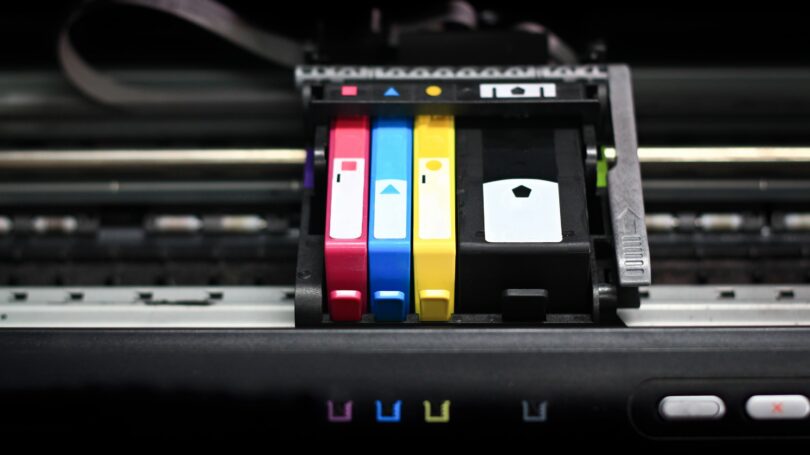When you’re living on a tight budget, you get in the habit of pinching pennies wherever you can. You switch off lights in any room you aren’t in, drink only tap water, and always buy generic brands at the grocery store. You compare prices for every purchase, large or small, and always choose the product that costs the least.
However, the best price isn’t always the best deal. In some cases, you’ll actually save money by spending more. Here are several penny-pinching habits that can turn around and bite you in the backside, as well as ways to avoid them.
1. Bulk Buys Gone Bad

Suppose you need an avocado for a recipe you’re trying. At the grocery store, you see that one avocado costs $1.25, but you can buy a bag of six for $5, or only $0.83 apiece. That looks like a much better deal, so you spring for the bag.
Unfortunately, your recipe only calls for one avocado. You aren’t sure what to do with the other five, and they’re softening quickly. You manage to make one into guacamole, but the other four go bad before you get a chance to use them. In the end, you only got two avocados for your $5, or $2.50 each – twice what you would have spent buying just one.
This is an extreme example of the perils of bulk buying. Most foods don’t spoil as quickly as avocados, but if you buy a huge container of them, there’s still a chance they’ll go bad before you can use them. A jumbo-sized barrel of pretzels could turn stale, or a five-pound bag of shredded cheese could get moldy. This is one of the reasons why joining a warehouse club isn’t always a good deal, especially for single people.
How to Avoid This Penny-Pinching Pitfall
Before you buy any product in bulk, consult the food storage chart from the University of Nebraska to see how long the food will stay fresh. Then consider how long it will take you to use it up and buy it only if you’ll get a chance to use all, or at least most, of it before it goes bad.
Of course, if you’re buying a product that keeps forever, such as paper towels, feel free to buy as much as you want.
2. Flimsy Products

You need a new pair of jeans, so you head for your local discount store and grab the cheapest pair you can find off the rack. Unfortunately, the fabric of these $15 jeans is thin, and after wearing them for only a few months, they already have holes in them. So you head back to the discount store for a new pair, and the cycle repeats itself.
If this is the way you typically shop, for clothes or anything else, you’re doing it wrong. Comparison shopping doesn’t just mean looking at the price tags and putting the cheapest product into your cart; you also have to consider the quality of the product and how long it will last. If you spring for a durable pair of jeans priced at $50, it will probably last you two or three years. But if you keep buying pair after pair of $15 jeans, you’ll spend $120 to $180 over the same amount of time.
Now, if you waste $15 on one flimsy pair of jeans before learning your lesson, that’s not such a big deal. It’s a much bigger problem if you go with the lowest price on a bigger purchase, such as a mattress. A $1,000 mattress that holds up well for 10 years costs only $100 per year, while a $600 mattress that sags in the middle after only two years costs $300 per year.
How to Avoid This Penny-Pinching Pitfall
Before making any purchase, especially a major one, do some research that goes beyond the price tag. Check sources like Consumer Reports and Wirecutter to see which products are the best performers, and look at user reviews on retail sites to see what customers have to say about durability. Also, examine the products yourself in the store to see how well they’re constructed.
Factor all this in along with price to choose the product that will give you the best bang for your buck. In some cases, the cheapest product really is the best value, but in others, it’s worth paying more for quality.
3. Cheap Product, Pricey Parts

Your old printer just bit the dust, so you run out to the office superstore for a replacement. You find a cheap inkjet on the shelf for only $50, which seems like an unbeatable deal. It serves you well for a couple of months, then runs out of ink, and when you head back to the store, you’re shocked to discover the ink cartridges for this model cost $25 apiece. By the time you’ve had it for a year, you’ve already spent twice as much on ink refills as you paid for the printer itself.
This kind of bait-and-switch – luring you in with a low-priced product in order to sell you lots of pricey parts – is particularly common with printers. According to a 2015 Consumer Reports survey, nearly half of all printer owners said they thought they paid too much for ink cartridges, and over 25% said they had to refill the ink too often.
You can fall into this trap with other products too, such as:
- A cheap car that breaks down often, costing you lots of money for maintenance
- An inexpensive computer that requires frequent, expensive software upgrades
- A smartphone that comes “free” with the purchase of a pricey cell phone plan
How to Avoid This Penny-Pinching Pitfall
When you’re buying a big item that has ongoing costs, compare products by looking at the true cost to own. Estimate how long you’ll own the item and how much it will cost you to use it over that period, then add this sum to the purchase price.
For instance, if you’re buying a printer you expect to keep for five years, figure out how much you can expect to spend in five years on ink, paper, electricity, and parts if it breaks down. Adding up all these costs might show that a $50 printer will actually cost you more than $550 to own for five years, while the $150 printer next to it on the shelf is a much better deal.
4. Long-Distance Deals

There’s one gas station in your town that consistently has the lowest prices, usually $0.10 less per gallon than the one closest to your home. Unfortunately, the cheap station is all the way across town, a good five miles off your regular route. Still, you figure it’s worth the trip since, if you buy 10 gallons of gas each time, you save a dollar.
However, there’s one problem with your math: it doesn’t account for the gas you use driving to and from the cheaper gas station. If your car gets an average 25 miles to the gallon, a 10-mile round trip uses 0.4 gallons of gas. If gas is at $2.85 per gallon, you’re spending $1.14 to make the trip – more than the dollar you save by buying the cheaper gas.
This is just one example of how going out of your way for a deal can cost you money. You run into the same problem with shipping costs when shopping online. For instance, if you find a new sweater online for $5 less than it costs in the store, but the shipping costs $6, you come out $1 behind. You can also lose money driving into the city for bargains if you have to pay $10 for tolls there and back and another $10 for parking when you get there.
How to Avoid This Penny-Pinching Pitfall
When you’re looking for a bargain, calculate the total cost. Along with the item’s price, include the shipping cost if you’re buying online or the cost of gas and tolls if you have to drive.
To estimate your gas cost, calculate the number of miles you’re driving and divide by your car’s average gas mileage to figure out how many gallons of gas you’ll use. Then multiply that by the cost of a gallon of gas to find the total cost of the trip.
5. Less Money, More Time

In your ongoing quest to save a buck, you’ve decided to try making your own laundry detergent. You choose a simple recipe that calls for nothing but bar soap, borax, and washing soda. You spend $11.50 on these ingredients, which should be enough to make about four batches of detergent.
It takes about half an hour to whip up your first batch, and you’re pleased to find it works. You figure each batch of your new homemade detergent will clean about as many loads as a bottle of your old detergent, which costs about $4.75. So, your $11.50 worth of ingredients will make the equivalent of $19 worth of store-bought detergent, for a savings of $7.50. Not too bad.
However, there’s one thing this equation doesn’t take into account: the value of your time. In order to save that $7.50, you’ll have to spend a total of two hours cooking up batches of homemade detergent. That means you’ll earn only $3.75 an hour for your efforts, around half of the federal minimum wage.
There are lots of frugal activities that save you money but cost you time. For instance, canning your own produce takes two to three hours of work per batch, and depending on which fruits and veggies you use, it might save you only a few cents a jar. Similarly, hanging a load of laundry on a clothesline takes around 20 minutes and saves you only about $0.43, according to HuffPost Canada.
That doesn’t mean you shouldn’t do these things if you enjoy them, but if you’re doing them just to save money, there are better ways you could use your time.
How to Avoid This Penny-Pinching Pitfall
Look at your penny-pinching habits in terms of the hourly wage you earn for doing them. Figure out how much the habit saves you in dollars and divide that by the number of hours you spend on it. Then compare that wage to the amount you could earn by, say, putting in more hours at work or on a side gig.
Also, consider which activity you would enjoy more. If you really like spending 20 minutes hanging laundry, great, but if you’d rather spend those 20 minutes working for a client on Fiverr, you can definitely make more money that way.
6. Skimping on Health Insurance

It’s time for you to choose a new health insurance plan at work. Your main goal is to keep your premium as low as possible, so you select the cheapest plan without paying much attention to what it covers.
What you don’t realize is that this cheap plan comes with a high deductible. As a result, you end up having to pay for most of your doctor visits out of pocket over the course of the next year. You also have to pay half the cost of all prescription drugs. By the end of the year, you’ve spent hundreds more on out-of-pocket medical costs than you would have spent buying a pricier plan in the first place.
This is bad, but the story could have an even worse ending. Because your cheap health plan covers so little, it could lead you to start skipping doctor visits. For instance, if a cut on your hand gets infected, you might decide to just clean it and bandage it as best you can at home, rather than go to the doctor for an antibiotic. But instead of getting better, the infection could spread and send you to the emergency room – a trip that will cost you a lot more than one doctor visit.
How to Avoid This Penny-Pinching Pitfall
When you choose a health plan, look at the total cost, not just the monthly premium. Think about all the medical care you get on a regular basis – prescriptions, checkups, an annual eye exam – and how much you’d have to pay for it under each plan.
In general, if you’re in good health and only see your doctor for checkups and the occasional minor problem, you’ll pay the least with the plan that has the lowest premiums. However, if you have a chronic health condition that requires regular care, you may be better off with a plan that has higher premiums and more coverage.
Final Word
Although pinching pennies can sometimes cost you money in the long run, that doesn’t mean you should swing to the opposite extreme and always spring for the highest-priced products assuming they’ll work better or last longer. There are plenty of ways to save money on a tight budget that do make sense.
For instance, shopping secondhand for items like clothes and furniture is often a way to get high-quality items at a lower price than cheap, flimsy new goods. Making your own detergent might not be a good use of your time, but you can save money with very little work by using other homemade cleaning products. Driving a long distance for the cheapest gas doesn’t make sense, but you can save both time and money by combining errands that require driving or taking a shorter route to work.
The bottom line is that when you’re trying to save a buck, you should look at the big picture. Consider not just how much you’ll spend right now, but how much you’ll spend, in both money and time, over the long term.
Can you think of any other ways pinching pennies can end up costing you money?
